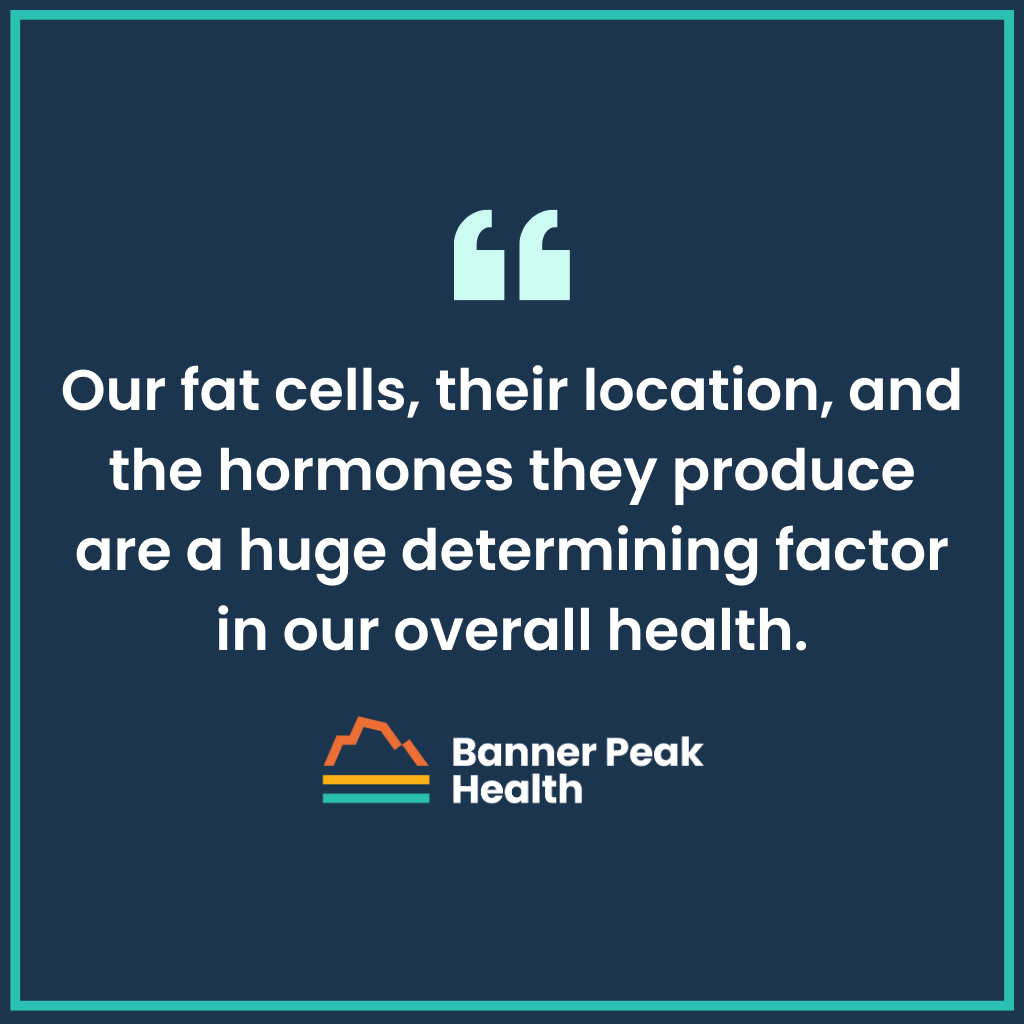Just as the adage “location, location, location” applies to real estate investing, the same applies to our fat cells.
All fat isn’t created equal. In fact, location highly determines the biology of our fat cells.
In this post, I’ll explain how two classic body types are related to two types of body fat, and why the differences between the two are worth noting.
Body Types and Types of Body Fat
The distribution of fat cells determines two classic human body types:
- The “apple” type — more fat cells located in the abdominal area, with smaller buttocks, hips, and thighs
- The “pear” type — more fat cells located in the buttocks, hips, and thighs, with a smaller midriff
The corresponding types of body fat are visceral fat and subcutaneous fat, respectively.
- Visceral fat = abdominal fat = fat in the gut = the apple body type
- Subcutaneous fat = fat in the thighs, hips, buttocks, and arms = the pear body type
Important Definitions
Let’s take a step back.
We all have a basic understanding that being overweight is “bad for you,” but what does that mean, exactly?
Defining ‘Overweight’
People tend to hyper-fixate on weight. We step on the scale, read the number, and, if it’s too high, we call weight the bad actor. But is it the weight that’s the problem?
There are more accurate ways to measure body composition, such as the body mass index (BMI), but we’ve discussed before why that can also be misleading. (BMI would have a linebacker signing up for Weight Watchers!) Better options, like the InBody scan, can establish an individual’s percentage of body fat and analyze visceral fat levels.
Still, though this information gets us closer, the real answer we’re looking for is the location of the weight and how that affects the metabolism.
Defining ‘Bad for You’
Data collected during the Women’s Health Initiative revealed that postmenopausal women (with normal BMIs) who had high fat cell distribution in the abdominal area (the apple body type) were three times more likely to have unfavorable health outcomes than women with fat cell distribution elsewhere (the pear body type) — even though none of the 2,700 women studied were overweight.
This study illustrates the difference in the biology of fat cells based on location.
Now we can talk precisely about what “being overweight” means and where it’s most dangerous to carry excess weight. There’s also extensive literature exploring the negative outcomes associated with excess visceral fat.
Types of Body Fat and Hormones
Each of us has billions of fat cells distributed all throughout our body, and each fat cell can release up to 20 different hormones. We can think of adipose tissue (fat) as an endocrine organ.
As we reviewed earlier, fat cells aren’t evenly distributed throughout the body. Age, gender, genetics, and hormones determine the location of our fat cells, and we can’t change any of those factors.
In general, the best way to discuss different types of body fat cells is in two main groups — visceral and subcutaneous — based on their location and function.
We’re always learning about our bodies; they’re incredibly complex. For example, in 1994, we discovered a hormone called leptin, which fat cells express to mediate hunger. Since then, we’ve discovered many other hormones secreted by fat cells that impact almost every aspect of our metabolism.
We can now answer the question “why is being overweight bad for you?” at the biological level. Adipocytes (fat cells) secrete hormonal signals called adipokines. The adipokine balance in our bodies determines our health.
Put simply, our fat cells, their location, and the hormones they produce are a huge determining factor in our overall health.
Our Priorities
As a physician, I want to use as many tools as possible to understand each patient’s risk of unfavorable health outcomes.
Understanding not just each person’s height and weight but also their fat distribution helps us to better understand their overall risk for illness, and subsequently, to mitigate that risk.
Today’s Takeaways
- There are essentially two types of body fat:
- Visceral (apple body type)
- Subcutaneous (pear body type)
- Excessive visceral body fat can drastically increase the risk of negative health outcomes, such as coronary artery disease and cancer.
- Fat cells aren’t evenly distributed throughout the body and play a major role in metabolism and overall health.

Barry Rotman, MD
For over 30 years in medicine, Dr. Rotman has dedicated himself to excellence. With patients’ health as his top priority, he opened his own concierge medical practice in 2007 to practice medicine in a way that lets him truly serve their best interests.





